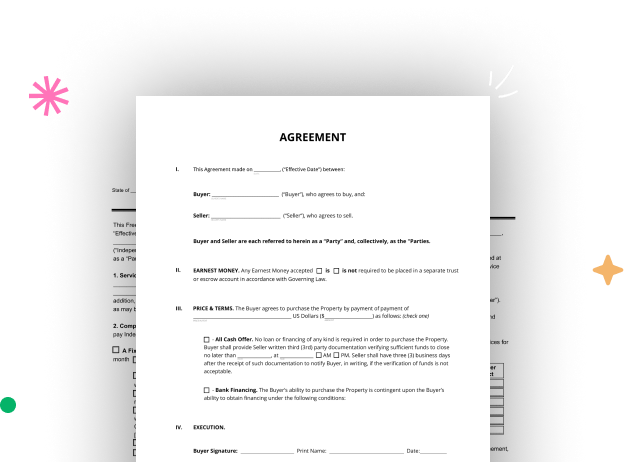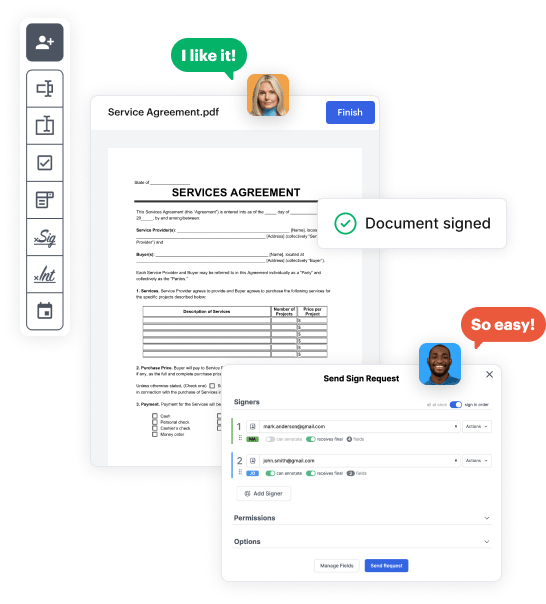

First, log in to your DocHub account. If you don't have one, you can easily register for free.
Once signed in, head to your dashboard. This is your main hub for all document-focused operations.
In your dashboard, click on New Document in the upper left corner. Select Create Blank Document to craft the Construction Industry Legal Document from scratch.
Place various items like text boxes, photos, signature fields, and other interactive areas to your template and assign these fields to particular users as required.
Personalize your template by inserting instructions or any other essential tips using the text tool.
Attentively review your created Construction Industry Legal Document for any inaccuracies or necessary adjustments. Make use of DocHub's editing tools to polish your form.
After finalizing, save your copy. You can select to retain it within DocHub, transfer it to various storage solutions, or send it via a link or email.